
This simple bed can be used alone or with the Cabin Bunk System. Features a paneling look for added character, and an compact design for small spaces.

Preparation
1 - 1/2 Sheet of 3/4" Particle Board
1 - 3/4" Particle Board @ 39" x 31 3/8" (Headboard Panel)
Please read through the entire plan and all comments before beginning this project. It is also advisable to review the Getting Started Section. Take all necessary precautions to build safely and smartly. Work on a clean level surface, free of imperfections or debris. Always use straight boards. Check for square after each step. Always predrill holes before attaching with screws. Use glue with finish nails for a stronger hold. Wipe excess glue off bare wood for stained projects, as dried glue will not take stain. Be safe, have fun, and ask for help if you need it. Good luck!
Instructions
Step 1
Step 2
Step 4
Step 6
Step 7
Now add the cleats to the insides of the siderails. If you are not using a box spring, you may wish to put your cleats at the top of the siderails, just don't forget that your slats will take up 3/4". Use glue and 2" screws. Also, for added support, you can attach the headboard and footboard to the cleats with screws too.
It is always recommended to apply a test coat on a hidden area or scrap piece to ensure color evenness and adhesion. Use primer or wood conditioner as needed.














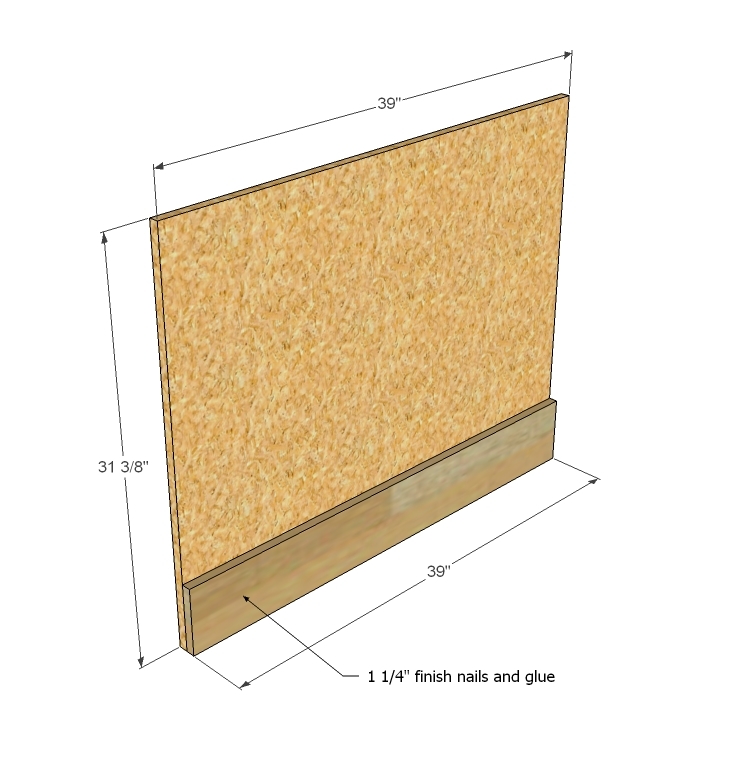
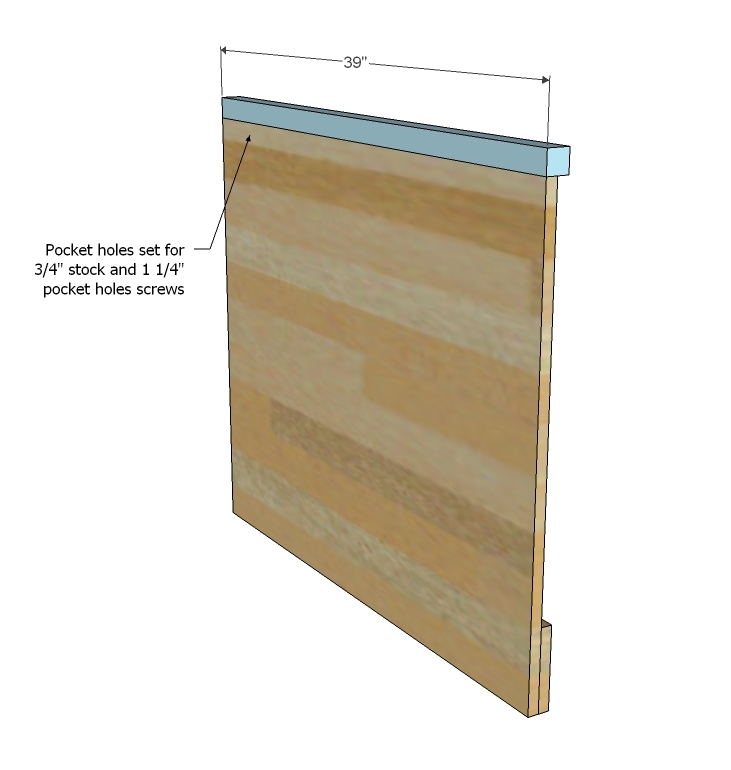
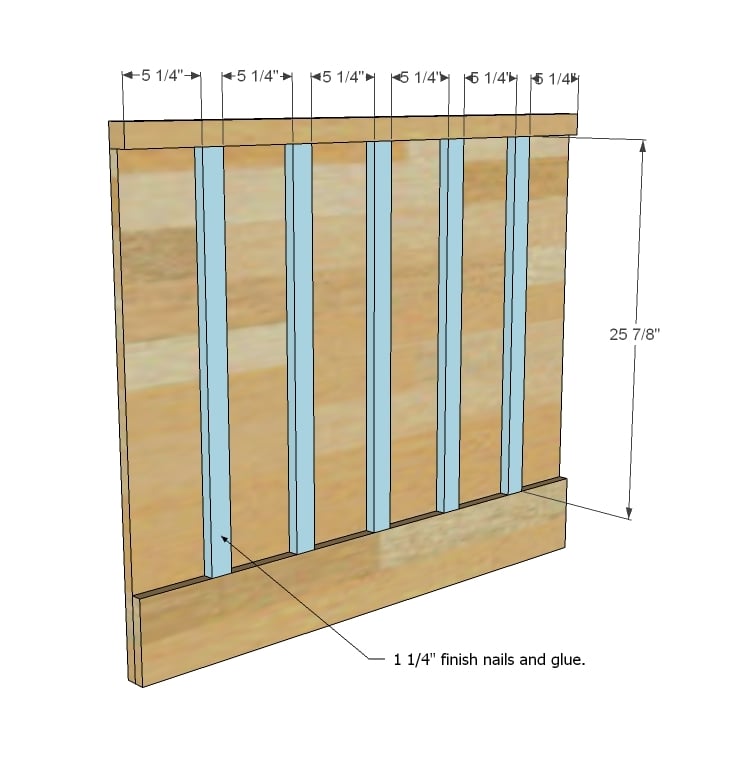
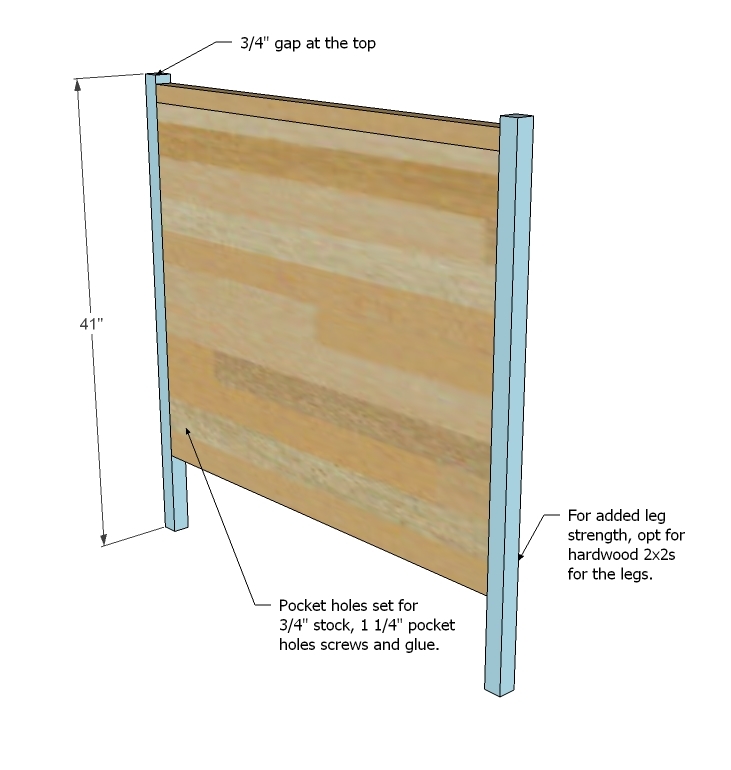
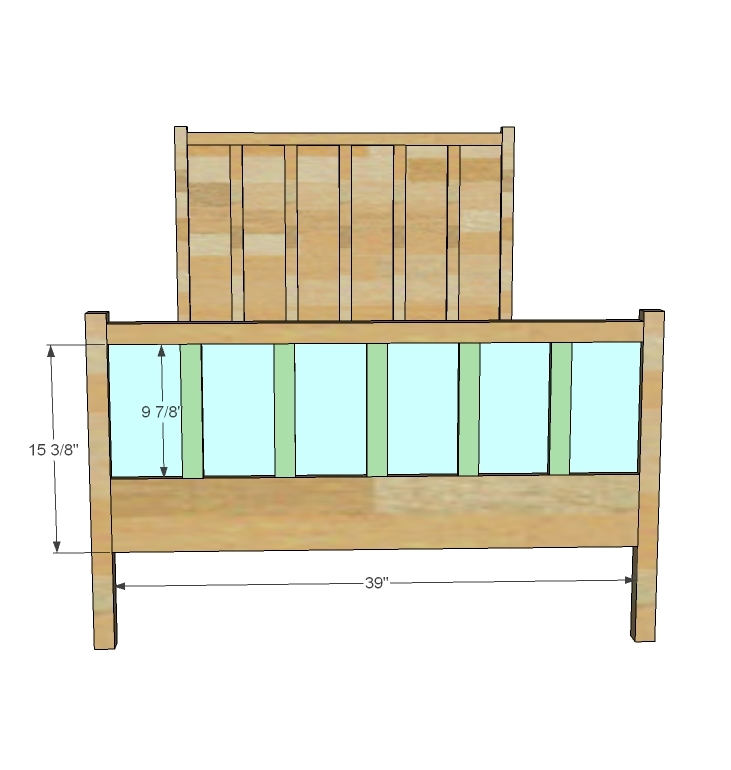


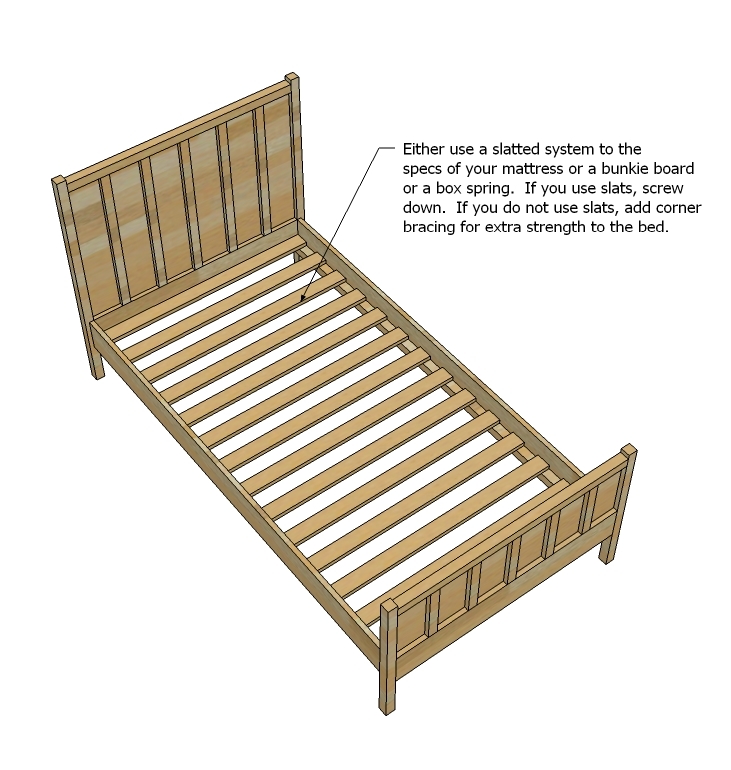
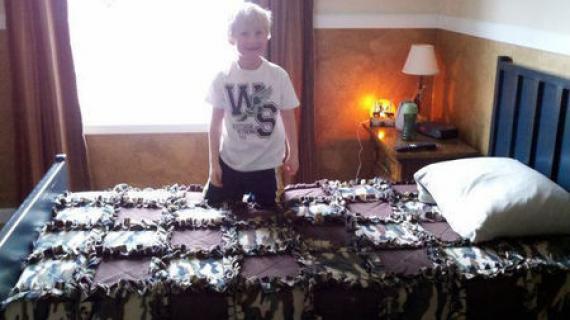

Comments
Chauntel
Wed, 04/06/2011 - 12:03
(No subject)
Kelly Varner (not verified)
Wed, 04/06/2011 - 20:20
Totally off topic :)
Ana! I just adore you and this bed is fabulous, and I will most likely make it into a bunk bed for my girls... but I have a another question. Can you do a tutorial on how to make pretty doors for my house?? I want something other than the standard 6 panel door from Lowes but don't want to spend a fortune. Is this possible??
Guest (not verified)
Wed, 08/31/2011 - 06:11
This seems like a great bed
This seems like a great bed and so easy to build
Alex Durling
lovelymommy
Tue, 10/04/2011 - 13:03
I love it!
I have seen several pages looking for something like this, it is just great!!! thanks for sharing.
Guest (not verified)
Wed, 01/11/2012 - 06:54
Use with trundle?
Can I build this bed and the trundle bed as a set?
Labine37
Tue, 10/04/2016 - 17:46
Pocket holes
Hi Ana,
I've made 3 of these beds for my boys, and I'm really happy how they turned out. What do you do for the pocket holes? I read putty, but when you go to stain, it'll show like flat no wood grain. Is there something else you would do apart from the putty?
Thanks a bunch!